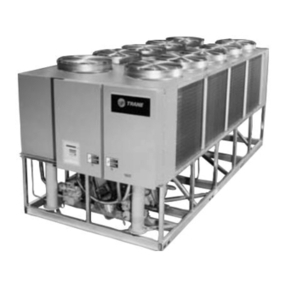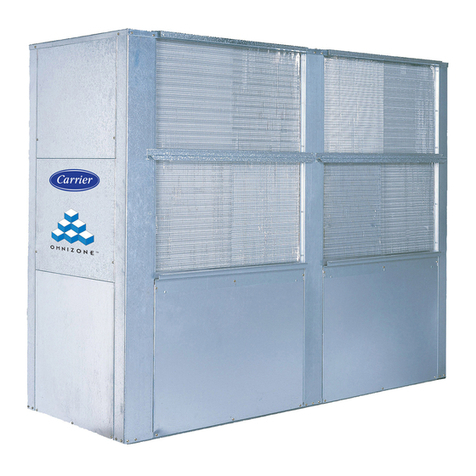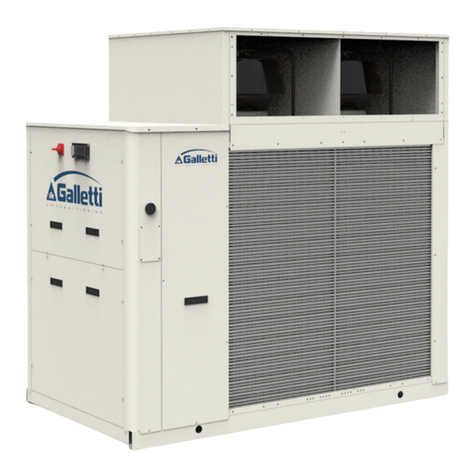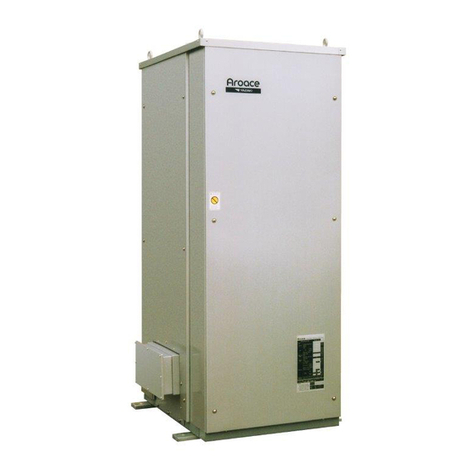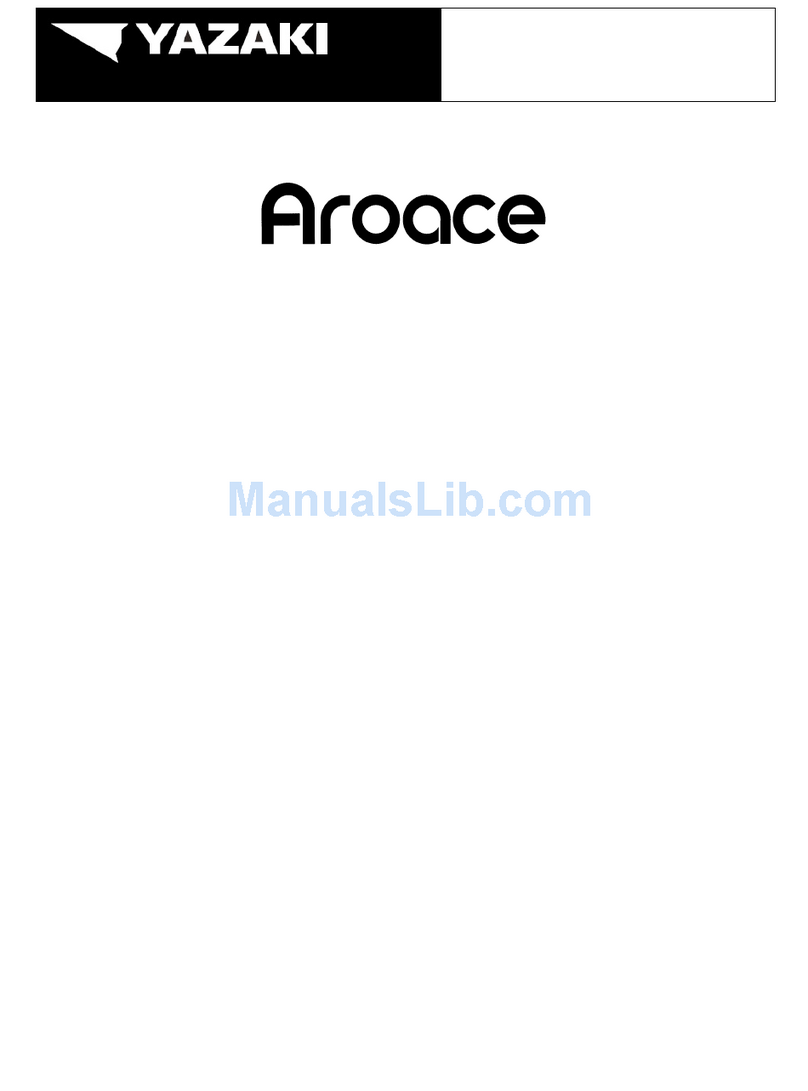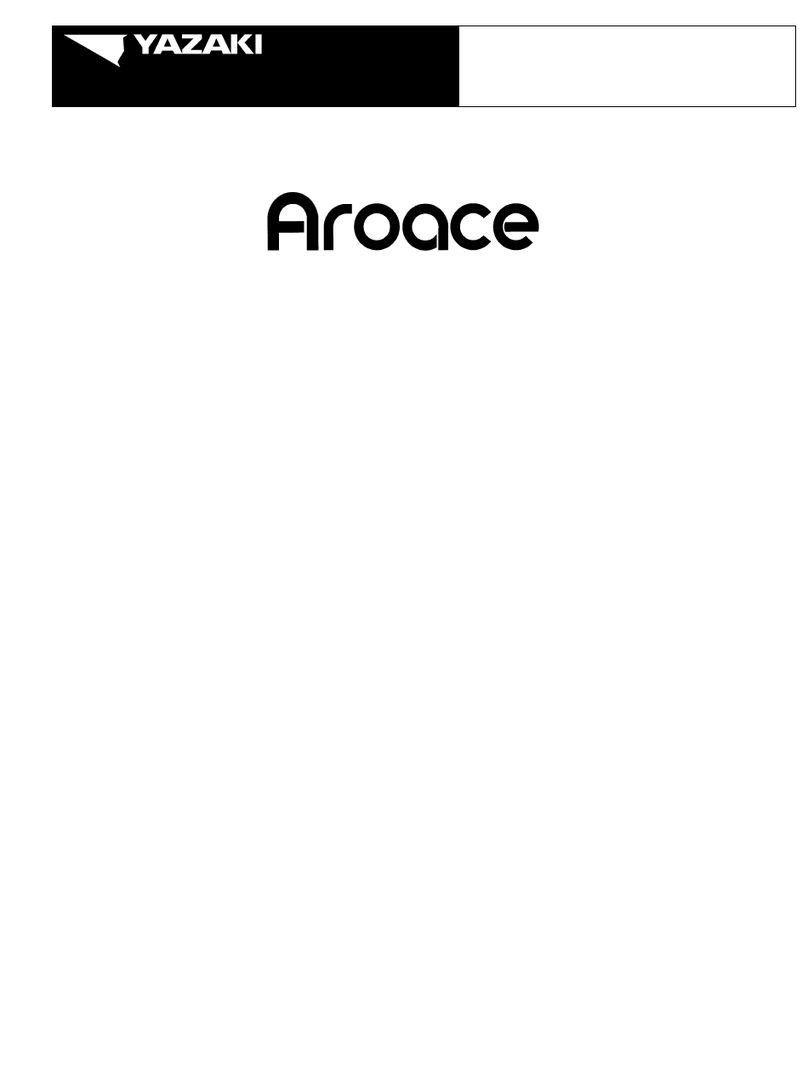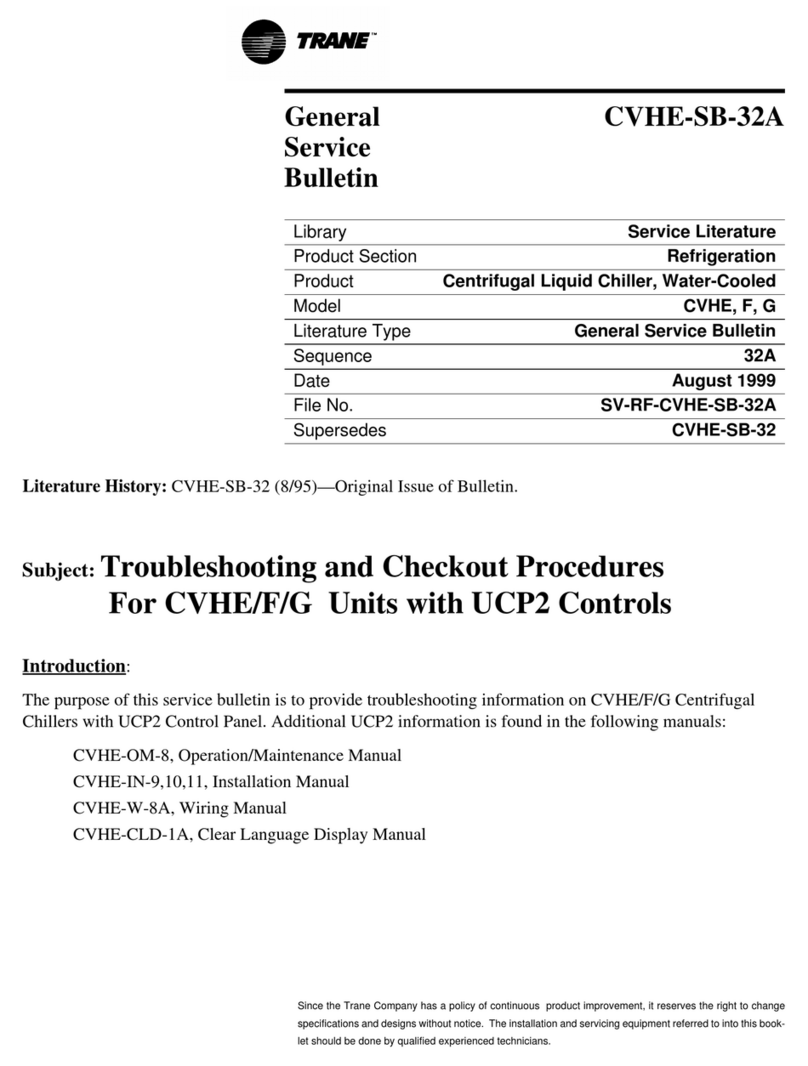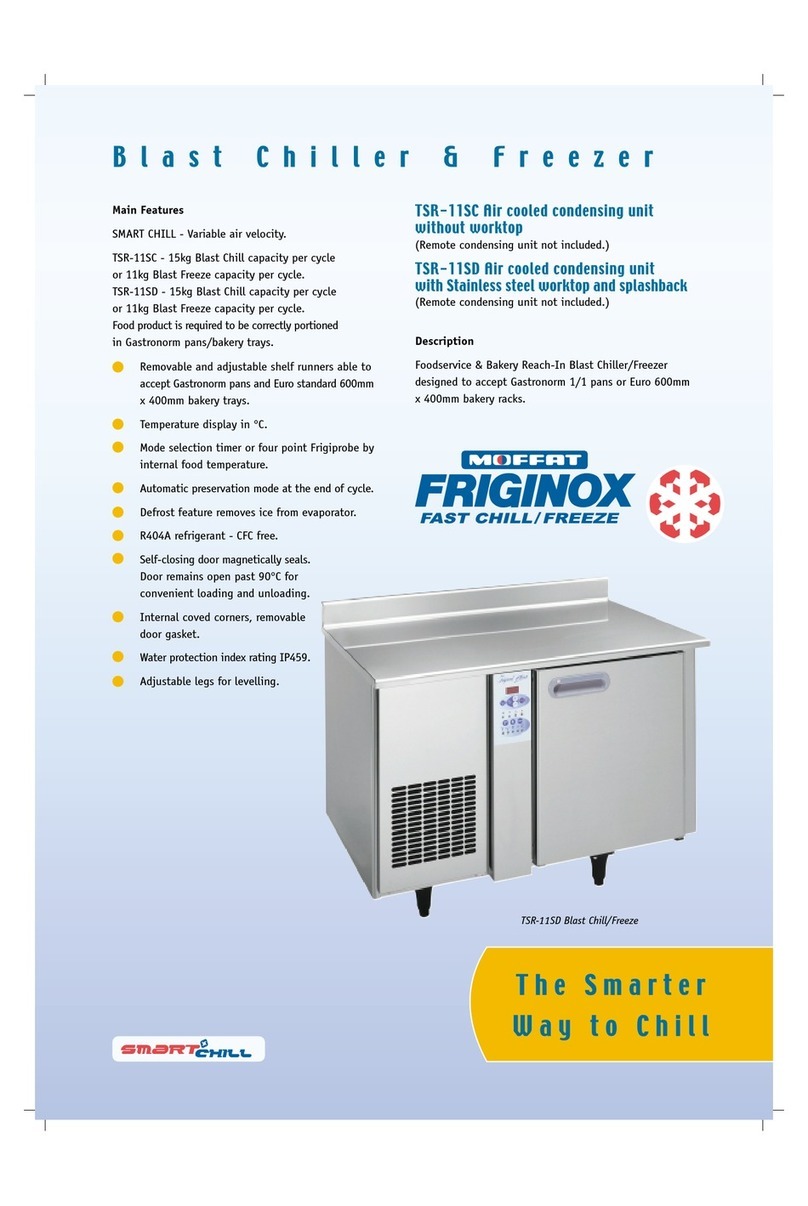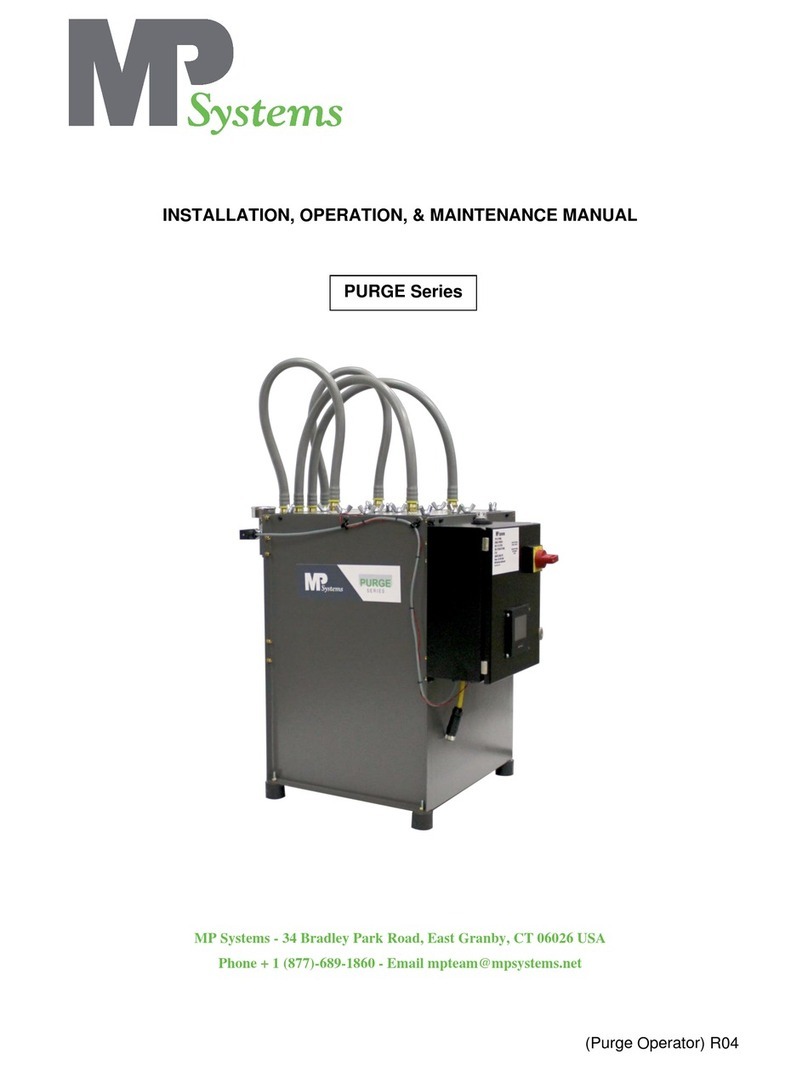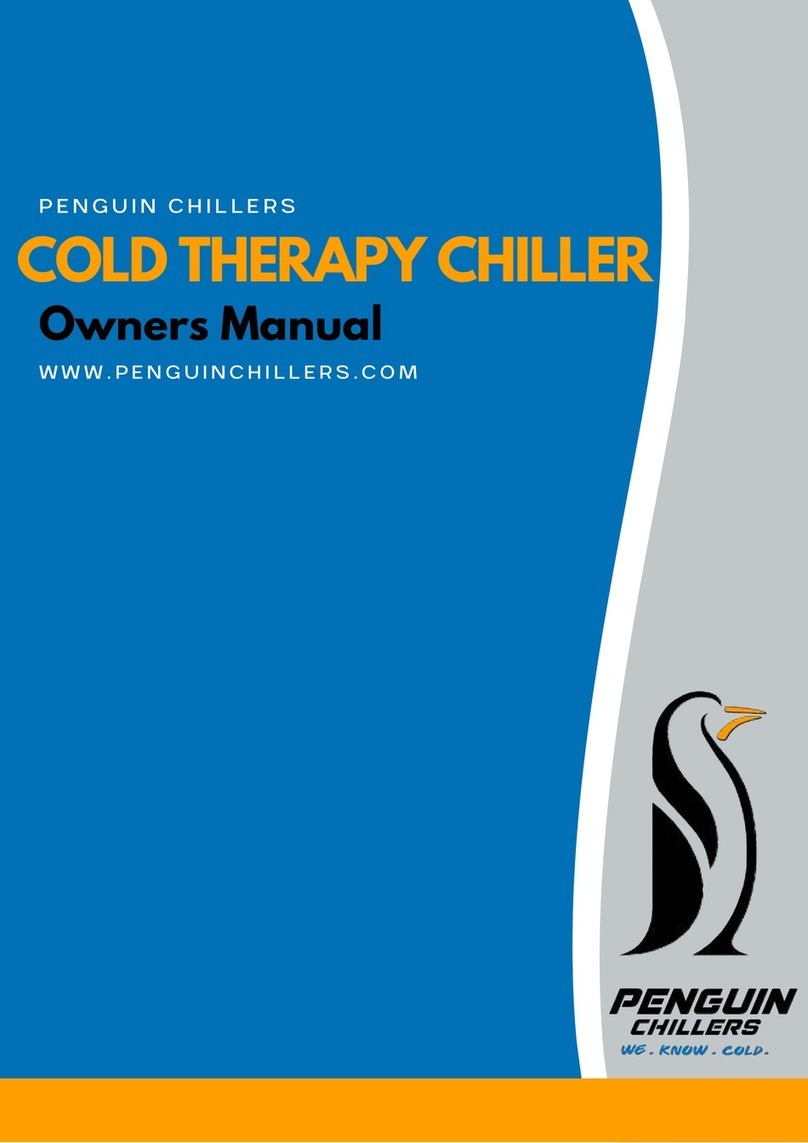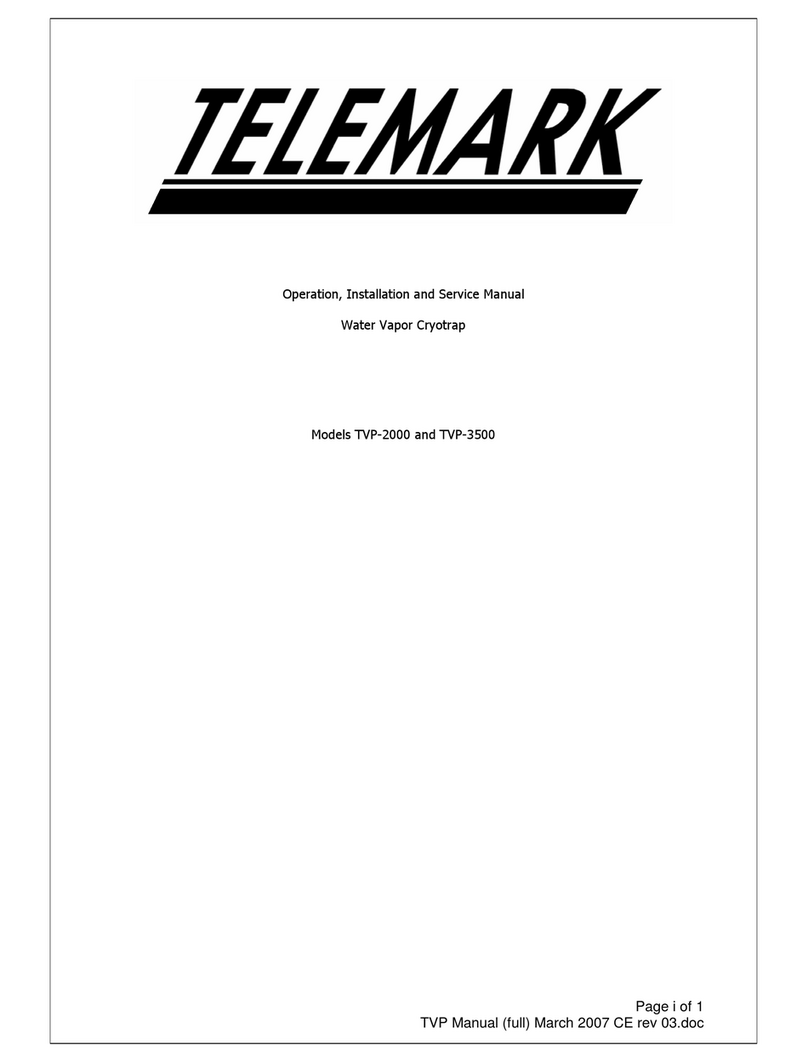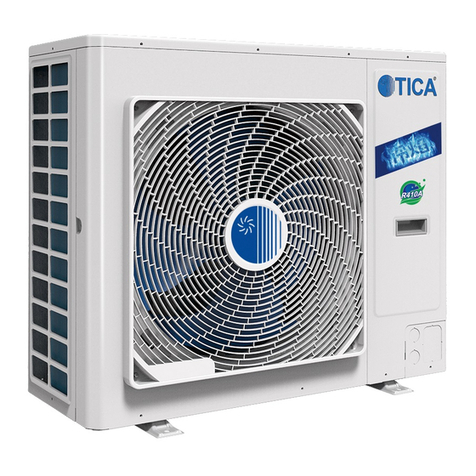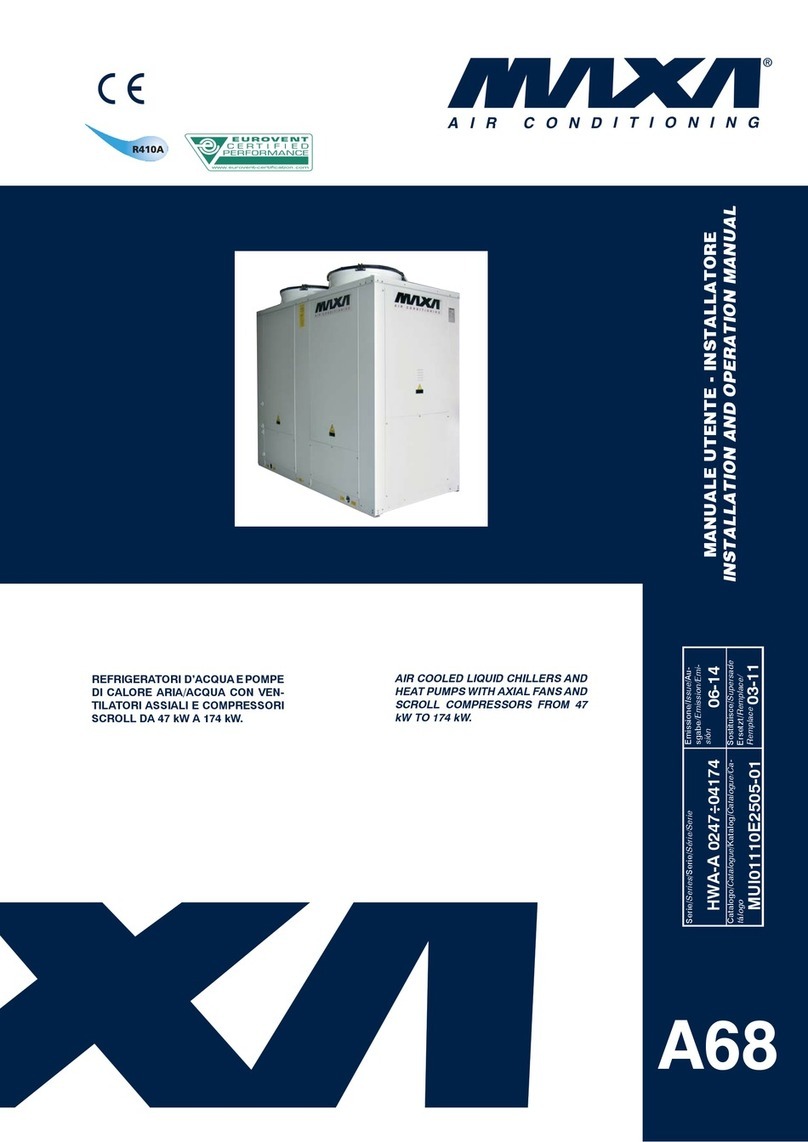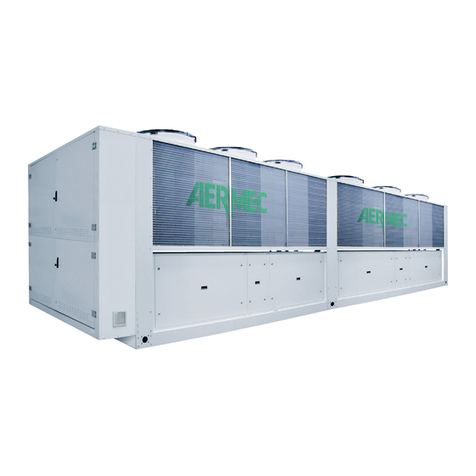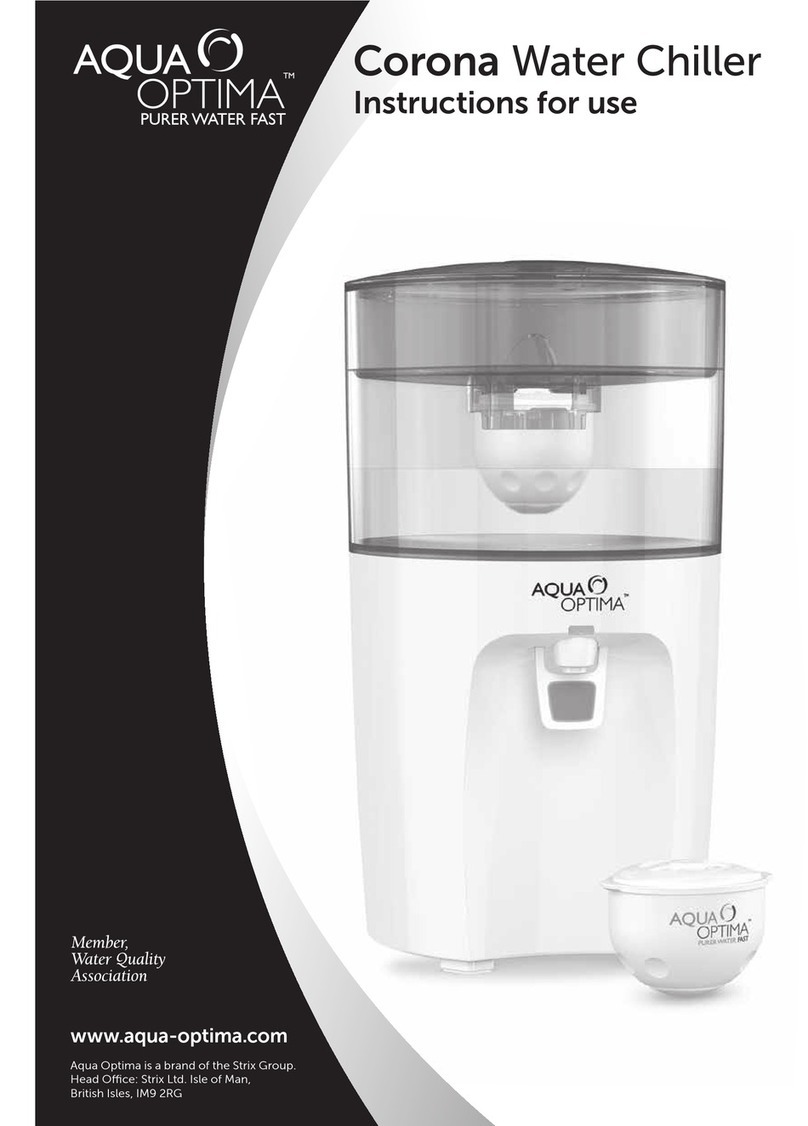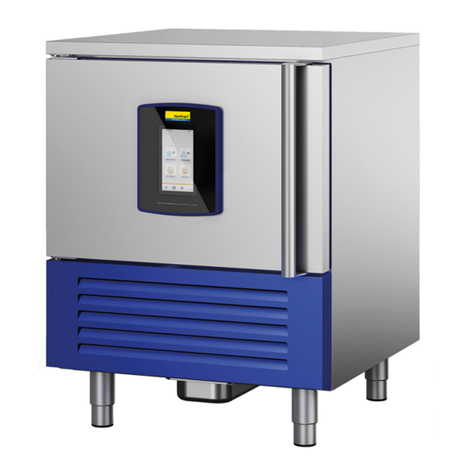
WFC- SC(H) Series .Installation - 4 -
ser ice, the Yazaki chiller-heater will not perform correctly on a continuous basis
without proper maintenance. Furthermore, always a oid placing the cooling tower at a
lower le el than the chiller-heater. Such designs in ariably lead to problems with
maintaining pumping stability.
3.2 Minimum Maintenance Clearances
The minimum space and
clearance requirements
shown in figure 3 must be
pro ided around each
chiller-heater unit to
facilitate installation,
commissioning and
procedures in maintenance.
The clearances shown in the
table below apply to the CH-
K 30 through to the CH-
K100 machines. If the
system is a multi-module
configuration where chiller-
heaters will be placed side-
by-side, the clearances
recommended must still
apply. If the recommended
ser ice clearances cannot be
pro ided as indicated, the
chiller-heater should not be
installed.
Figure 3
Table of Clearances
Installation Area Maintenance Clearances
Model
WFC-SC(H)
A
B
Front
C
Back
D
Left side
E
Right side
F
10
3,575 2,885 1,000 1,000 700 700
20
3,540 2,860 1,000 1,000 700 700
30
3,780 3,180 1,000 1,000 700 700
50
4,060 3,185 1,000 1,000 700 700
3.3 Foundation
Mount the absorption chiller-heater on a le el foundation constructed of non-
combustible materials, capable of supporting the operating weight of the machinery.
This particularly applies to roofs, if that is where installation is contemplated.
Be sure the roof is able to support the chiller-heater, cooling tower, pumps and
associated piping (refer Section 1 Specifications for details). It is additionally
important that, if the equipment is to be placed on the roof of a building, it should be
located in a well drained area and at least two meters from the edge. A suitable
